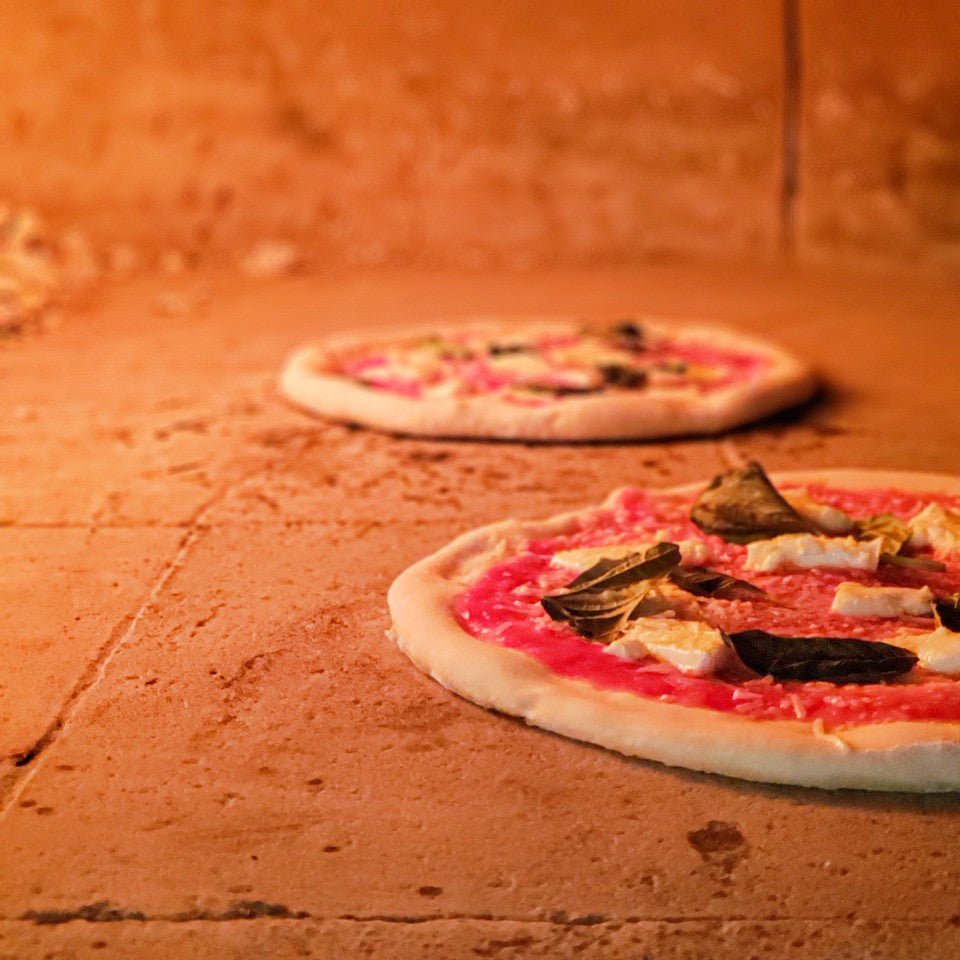The History of Pizza Napoletana: Ancient Rome to 1984

With the announcement of our first Pizza Party on November 5th, we thought it would be a good idea to talk about the history of our favorite circular meal! We're starting part one of our deep dive into the delicious details of pizza this week with its earliest beginnings!
Pizza is pizza, right? Nope. Especially if you ask the Associazione Vera Pizza Napoletana (more on them later). As much as pizza can vary simply by the variety of toppings, there are actually dozens of styles and variations of pizza all over the globe. But among food purists, culinary historians and proud Italians, Neapolitan Pizza is the king. Well, the queen actually... we’ll get to that too.
Most culinary historians versed on the subject point to the ancient Roman peasant meal comprised of focaccia-like flatbread with various toppings as the precursor to Neapolitan Pizza. In fact, Roman-style pizza has evolved along its own lineage and is still very popular in Rome today. It probably deserves its own blog post, but we’ll dig into that another day.

The first documented use of the word ‘pizza” dates all the way back to 997 AD. It’s important to note that very similar meals were likely popular throughout ancient Persia and Northern Africa around the same time. As long as there has been bread, people have been rolling it out thinly and baking it with toppings. Another important note is that tomatoes did not make their journey to Europe from the Americas until the 1500s - nearly 500 years after the first documented mention of the word pizza. By modern standards, one can hardly call it pizza if it doesn’t have tomato sauce and this essential ingredient played a huge part in the creation and subsequent codification of Neapolitan Pizza.
There are a few versions of the origin of Neapolitan Pizza, but the reigning story is that Pizzaiolo Raffaele Esposito “invented” the Margherita Pizza for Queen Margherita of Savoy. The bright tomatoes, fresh mozzarella and fragrant basil were meant to represent the red, white and green colours of the flag of a newly unified Italy.

This style of pizza became incredibly popular in Naples and eventually spread across Italy and made its way to America in the early 1900s. As it spread in popularity, each would-be Pizziaolo put their twist on the traditional margherita pizza and although variety may be the spice of life, there was a serious lack of consistency around what can be called “pizza.” What kind of cheese should be used? How thick should the crust be? Should seasonings be added to the tomato base? Does there even need to be a tomato base?
Enter the Associazione Vera Pizza Napoletana. Comprised of some of the oldest pizza-making families and some of the most famous pizzerias in Naples, this organization was formed in 1984 to preserve the traditional method and ingredients of their beloved pizza and to regulate what can officially be called Neapolitan Pizza.

They were eventually recognized by the Italian government as a Denomination of Control (DOC). That’s right - you’ve probably seen “DOC” on some of the more traditional Italian wines you’ve purchased. It’s similar to the Appellation system in France and it covers wine, cheese and other agricultural products to uphold quality standards and prevent inferior products from being sold under the esteemed name of Neapolitan Pizza. Neapolitan Pizza is also a Traditional Specialty Guaranteed product in the European Union and Great Britain and the art of making it is included in UNESCOs list of intangible cultural heritage.
All these rules and designations, but what exactly is Neapolitan Pizza according to the Associazione Vera Pizza Napoletana?
- The dough must be made from Type 00 or Type 0 superfine flour, water, salt and fresh Neapolitan or brewer’s yeast
- The dough must not be more than 3mm thick when rolled and twirled out
- The sauce must be made with San Marzano or Pomodorino Vesuviano tomatoes and nothing is to be added to them except salt!
- The cheese must be fresh buffalo mozzarella, which is made from the milk of the Mediterranean water buffalo. Fior de latte, mozzarella made from cow’s milk, is an acceptable substitute.
- Fresh basil is placed on top of the other toppings.
- The olive oil must be poured in a spiral motion on top before baking in a 900 degree brick oven

Yes, Neapolitan Pizza is serious business! These aren't even all of the rules. You can check out the Associazione Vera Pizza Napoletana website for yourself if you’re curious. It’s a fascinating culinary rabbit hole to dive into. The type of ingredients used are so specific because true Neapolitan pizza needs to highlight ingredients produced in the Campania region of Italy, similar to how champagne the beverage needs to be made in Champagne the region to achieve official certification.
Many food lovers (especially Neapolitans) refer to Neaopolitan Pizza as the pizza, and it’s hard to argue with them. This style of pizza has proliferated across the world and is arguably the most prolific of the many styles of pizza.
But, this isn’t the end of Neapolitan Pizza’s story. How did it become so popular and influential across the world, especially in North America? We’ll have to cover that part of the story next time!

Stay tuned to our blog and sign up for our newsletter so you don’t miss out!
We're hosting a Pizza Party with Christie Peters from Primal Pasta!
We'll be making brand new, one time only pizzas, so you won't want to miss out!
Tickets can be purchased here!
Want 10% off your next order? Sign up for our newsletter!
Follow us on Instagram and Facebook
Have a fond memory of Christies Bakery? Send us an email at info@christiesbakery.com!





